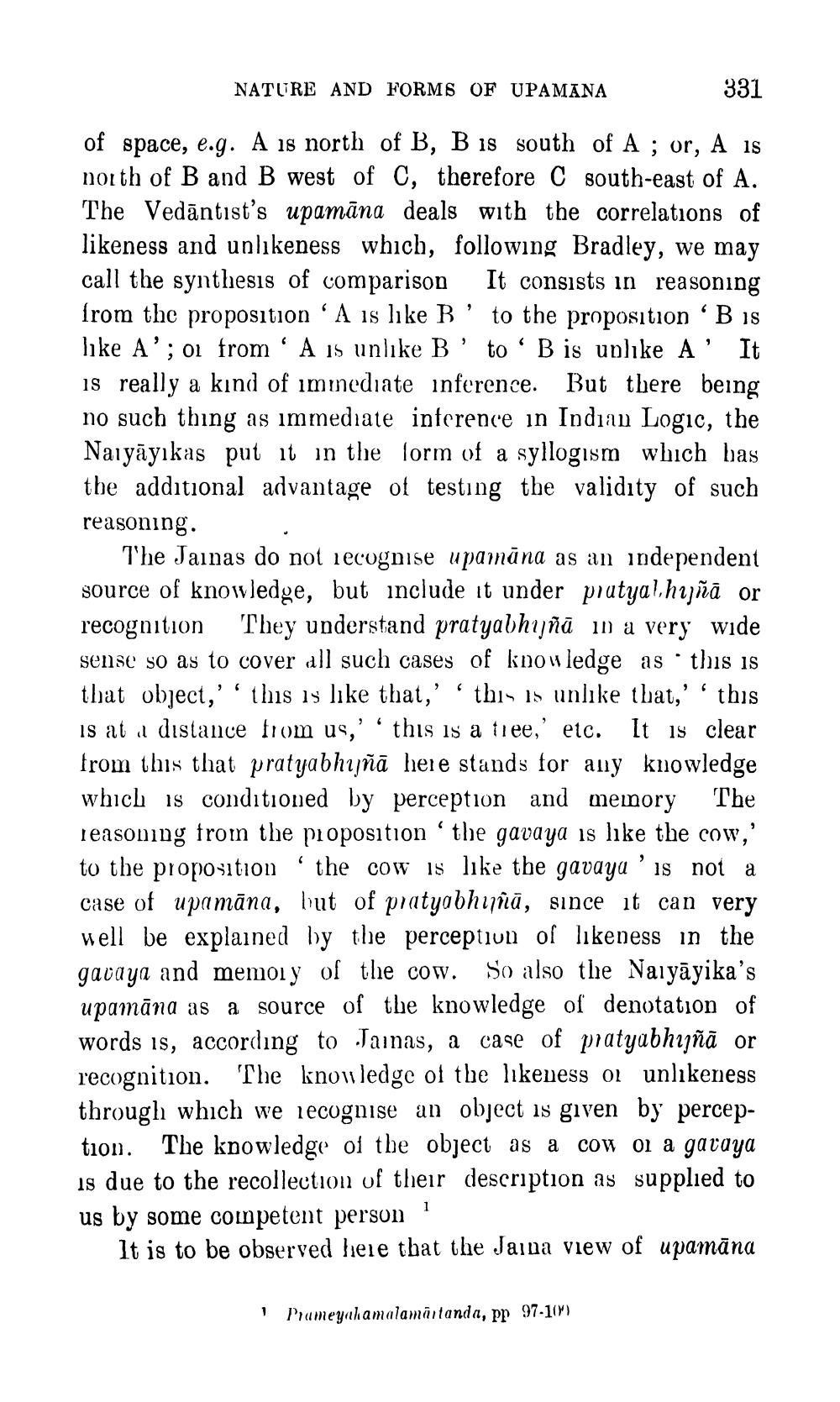________________
NATURE AND FORMS OF UPAMANA
331
of space, e.g. A is north of B, B is south of A ; or, A is north of B and B west of C, therefore C south-east of A. The Vedāntist's upamāna deals with the correlations of likeness and unlikeness which, following Bradley, we may call the synthesis of comparison It consists in reasoning from the proposition ' A is like B’ to the proposition ‘B is like A’; 01 from 'A is unlike B' to ' B is uplıke A' It is really a kind of immediate inference. But there being no such thing as immediate inference in Indiau Logic, the Naiyāyikas put it in the form of a syllogism which bas the additional advantage of testing the validity of such reasoning. .
The Jainas do not recognise upamāna as an independent source of knowledge, but include it under prutyal,hijñā or recognition They understand pratyabhijñā in a very wide sense so as to cover all such cases of knowledge as this is that object,''this is like that,' 'this is unlike that,' this is at a distance from us,'' this is a free,' etc. It is clear from this that pratyabhijñā here stands for any knowledge which is conditioned by perception and memory The Teasoming from the proposition 'the gavaya is like the cow,' to the proposition the cow is like the gavayu 'is not a case of upamāna, but of pratyabhuîā, since it can very well be explained by the perception of likeness in the gavaya and memory of the cow. So also the Naiyāyika's upamāna as a source of the knowledge of denotation of words is, according to Jainas, a case of pratyabhijñā or recognition. The knowledge of the likeness or unlikeness through which we recognise an object is given by perception. The knowledge of the object as a cow oi a garaya is due to the recollection of their description as supplied to us by some competent person?
It is to be observed here that the Jaina view of upamāna
1 Prameyahamalamatanda, pp 97-104)




